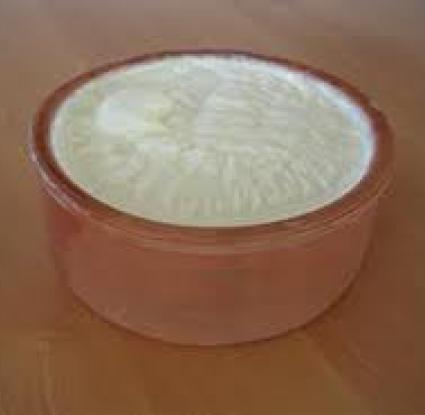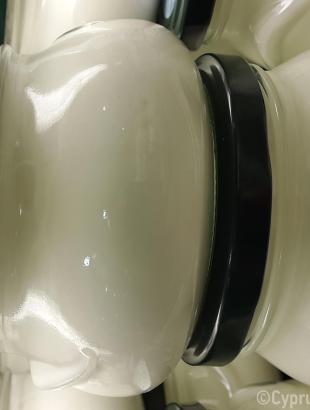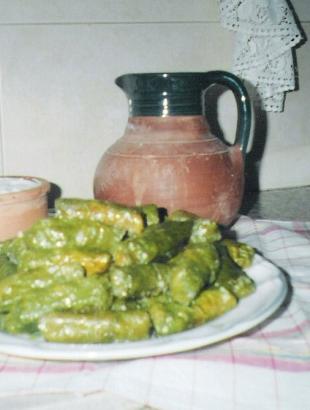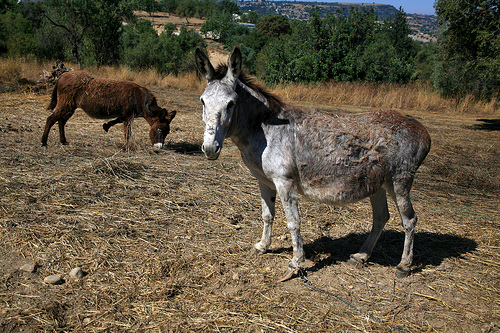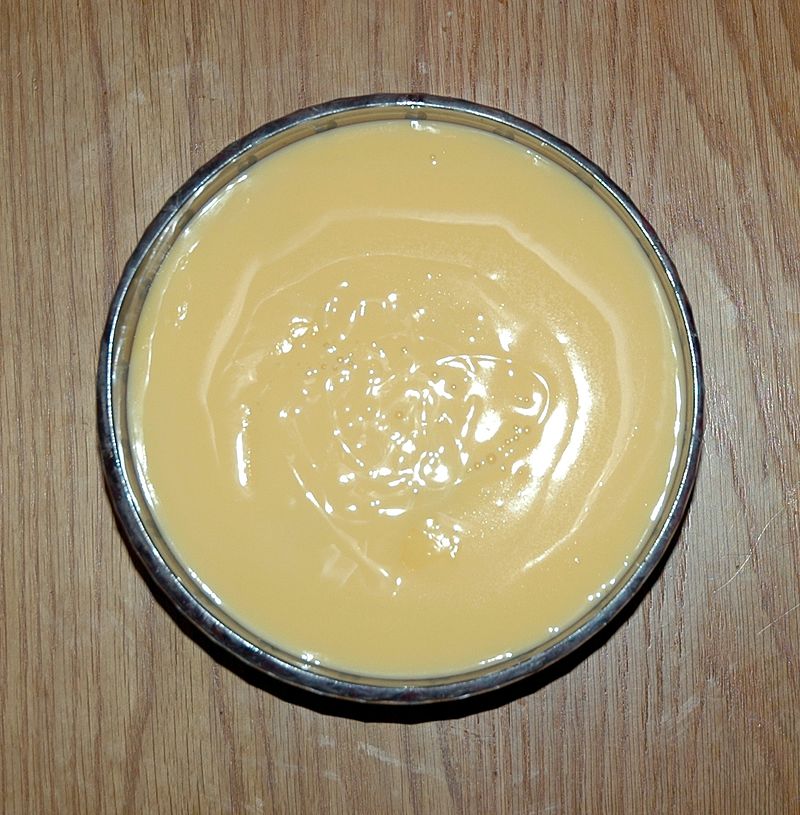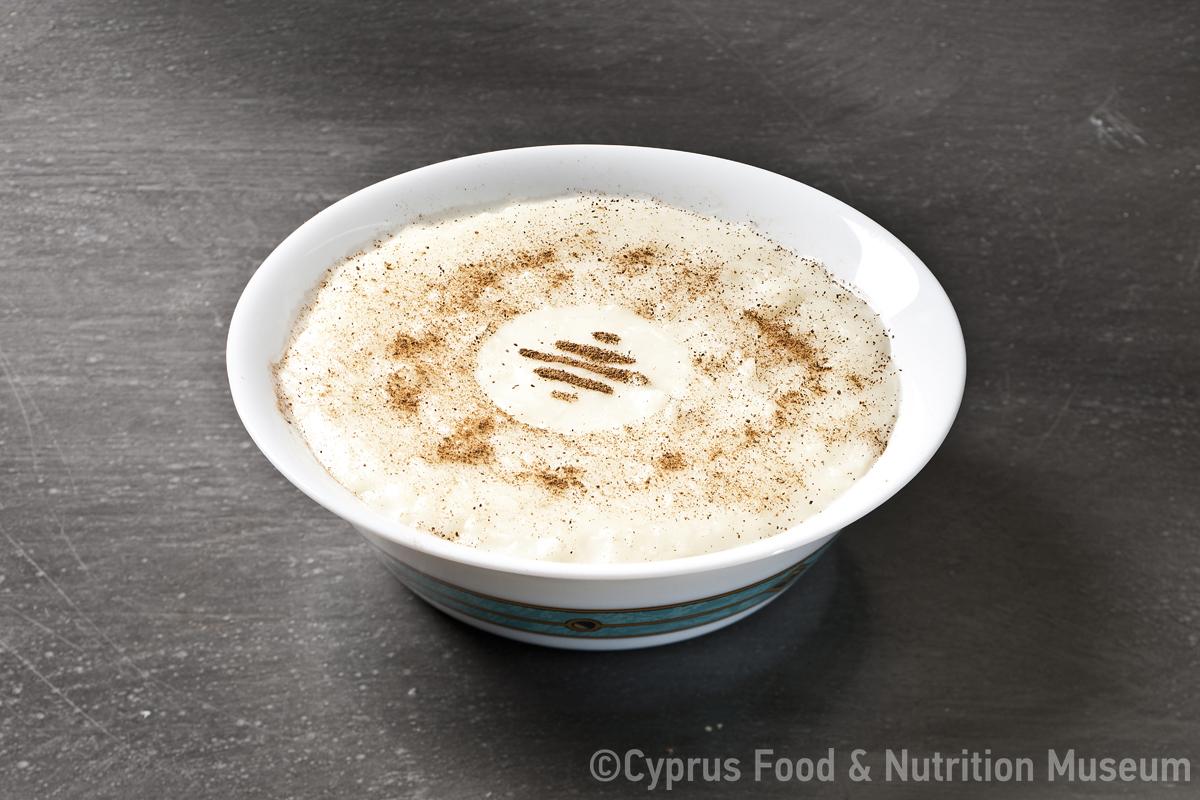In the districts of Limassol and Paphos it was called galan oxinon (sour milk). In the city and district of Nicosia and in the other parts of the island, it was called yoghurt. 'Galan tis tsoukkas' was the name given to the yoghurt that was stored and sold in a clay container (tsoukka).
Name - Origin
Γιαούρτι, ξινόγαλα
Yoghurt was a common dairy product made throughout the year (Xioutas 1978, 14; Igoumenidou-Rizopoulou 2008, «Τα γαλακτοκομικά προϊόντα», 411).
In the districts of Limassol and Paphos it was called galan axinon (sour milk). In the city and district of Nicosia and in the other parts ofthe island it was called yoghurt. Sometimes, it was also called 'oxinon galan' (Kypri 1983 [2003²], entry γιαούρτιν,το, 141).
Kyriakos P. Hadjioannou notes that "we have two kinds of milk: a) the galan to glitžin, the common milk, and b) the galan to oxinon, the yoghurt" (Hadjioannou 1933, 39).
"Galan tis tsoukkas" was the name given to the yoghurt, which was stored and sold in a clay container called tsoukka.
Kyriakos Theodorou in his publication «Τα Λύμπια: μια περιδιάβαση στο παρελθόν και στο παρόν» notes that katastatós is the katakathi, a bit of ready-made yoghurt in the container where the milk is put to acidify and thicken (Theodorou 2006, 385-389).
For the preparation of yoghurt, they used to pour a bit of sour yoghurt into milk that had previously been boiled and cooled. They would stir it until the yeast was evenly dissolved in the milk. They would then put it in a container and, in order to keep it at a constant, lukewarm temperature, they would place it on bran and cover it until it thickened (Xioutas 1978, 14? Igoumenidou-Rizopoulou 2008, 'Dairy products', 411; Ionas 2001, 142) or, according to Ioannis Ionas, if the weather was very hot, they would cover it well with a warm cloth. The yoghurt was not prepared in a metal cooking pot but in a clay pot, known as tsoukkan ( Ionas 2001, 142).
In Palaikythro, yoghurt was prepared as follows: They would heat the sheep's milk, which is thicker than goat's milk and thickens better and place it in containers. A spoonful of yogurt, the pikartin, is added to the containers of milk and stirred. The containers are then placed on the bran, so that the milk cools down slowly and thickens (Kyprianou 1992, 77).
Functional and symbolic role
Yoghurt was cut with a slotted spoon (Ionas 2001, 142) and consumed together with pilaf (bulgur) (Ionas 2001, 142; Xioutas 1978, 14).
Yoghurt was consumed all year round, except during fasting periods, but especially during carnival. In Lysi, on Meatfare Sunday, they would eat meat, galan oxinon and pilaf (lamb with pilaf stuffing). According to tradition, they would slaughter the lamb on Saturday and on Sunday, after stuffing it with pourkourin, they would put it in the oven that was lit by one woman in each neighborhood. During the following week, the Cheesefare week, no meat would be consumed but only cheese and savoury products until Sunday. On Cheesefare Sunday (the day before Lent), all the family members would gather in the evening in a house with their food, which consisted of all dairy products and savoury dishes such as ravioles, tomatšia, small pittas, galan oxinon and codfish (Xystouris 1980, 136-137).
Additional information and bibliography
Yoghurt was usually sold by Turkish Cypriots, in clay tsoukkes or pineáes (Xioutas 1978, 14; Igoumenidou-Rizopoulou 2008, 'Dairy products', 411). Xenophon P. Farmakidis, however, mentions that yoghurt in tsoukkes was sold by Christians and that the Ottomans of Cyprus sold it in kkeses, which they placed on wooden trays and advertised in various areas in the cities. In Limassol, gala oxinon, as it was called there, was sold both in kkeses and in tsoukkes. Milk in tsoukka, which was of better quality, was sold by the oka, by calculation and without being weighed on the spot, because the milk sellers could not carry weights with them. There were often discussions and quarrels between the milk sellers and the buyers about the accuracy of the weight of the milk sold (Kypri 1983 [2003²], entry κκεσέ,η, 160).
The proverb "He who has a lot of honey, he puts it in the gala oxinon" is said about the very rich, who spend recklessly (Petrou-Poeitou 2013, entry Milk acid, 34).
Theodorou K. (2006), Τα Λύμπια: μια περιδιάβαση στο παρελθόν και στο παρόν, Nicosia.
Ionas I. (2001), Τα παραδοσιακά επαγγέλματα της Κύπρου, Publications of the Centre for Scientific Research, XXVII, Nicosia.
Kypri Th. D. (ed.) (1983 [2003²]), Materials for the compilation of a historical dictionary of the Cypriot dialect, Part B, Glossary of Xenophon P. Pharmakides, Publications of the Centre for Scientific Research, IX, Nicosia.
Kyprianou P. Ch. (1992), "Folklore of Palaikythros", Folklore Cyprus, 42 (annex), 1-101.
Babiniotis G. (2005), Dictionary of Modern Greek Language. With comments on the correct use of words. Interpretative, Orthographic, Etymological, Synonyms, Main Names, Scientific Terms, Acronyms, Centre for Lexicology, Athens, Greece.
Xioutas P. (1978), Κυπριακή λαογραφία των ζώων, Publications of the Centre for Scientific Research, XXXVIII, Nicosia.
Xystouris S. (1980), Η κωμόπολη της Λύσης: ιστορική, κοινωνική, γεωργική και λαογραφική επισκόπηση, Nicosia.
Petrou-Poeitou E. (2013), Where do they come from. Words and stories from the world of taste, Epiphaniou Publications, Nicosia.
Rizopoulou-Igoumenidou E. (2008), «Τα γαλακτοκομικά προϊόντα στον ετήσιο κύκλο της παραδοσιακής ζωής στην Κύπρο», Η ιστορία του ελληνικού γάλακτος και των προϊόντων του (1ο Τριήμερο Εργασίας, Ξάνθη, 7-9 Οκτωβρίου 2005), Καλαντζόπουλος Γ. (επιμ.), Piraeus Bank Group Cultural Foundation, Athens, 401-423.
Hadjiioannou K.P. (1933), Γεωργικά και ποιμενικά της Κύπρου, Thessaloniki.
Varvara Yangou, Dimitra Demetriou, Tonia Ioakim, Stalo Lazarou, Ivi Michael, Argyro Xenophontos

